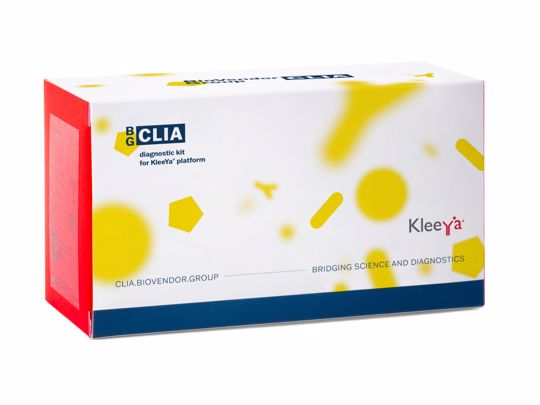CLIA HSV 1+2 IgG
The chemiluminescence assay is intended for the diagnosis and screening of HSV infection using IgG antibodies in human serum or plasma in the general population
The chemiluminescence assay is intended for the diagnosis and screening of HSV infection using IgG antibodies in human serum or plasma in the general population
| Catalog Number: | CL-HSVG100 |
|---|---|
| Size: | 100 tests |
| Regulatory status: | CE IVD |
| Clinical topic: | Infectious Diseases |
| Diagnostic panel: |
Herpes Viruses Sexually Transmitted Infections (STIs) TORCH |

Herpes simplex virus exists in two types (HSV-1 and HSV-2) and belongs to the Herpetoviridae family. Both types of virus also share common antigens that can cross-react in serological tests. The only host of the infection is human. Herpes is transmitted by means of droplet infection or during close contact with an infected person. The virus replicates primarily in the mucous membranes of the eye, mouth, nose, and genitals. Primary infection of HSV-1 generally occurs already during childhood. HSV-1 usually infects the bulbar conjunctiva or oral mucosa. The infection is frequently asymptomatic or may lead to the appearance of herpetic lesions.
HSV-2 infection is one of the most common venereal diseases which result in the formation of lesions in the genital mucosa. There are also rare cases of transplacental transmission of this disease. The infection of a child through cervical secretions during childbirth occurs more commonly. One of the most serious forms of HSV infection is herpetic encephalitis.
The infection tendency to persist in the organism is characteristic for HSV disease. It may also be reactivated under certain conditions (stress, reduced immunity).
The diagnosis of the disease is based on the clinical picture, epidemiological history, and laboratory tests. Primary infection is associated with the production of specific IgM class antibodies. These are detectable as early as 1 week after infection and persist for about 6 weeks. Specific IgG antibodies usually appear 2 to 3 weeks after IgM antibodies but may appear several months later. Viral reactivation may or may not be associated with the production of IgM antibodies. Significant increases in IgG levels are seen in paired sera in both primary and recurrent infections. Specific IgG antibodies usually remain at low levels throughout life.
| Assay stability | 30 days on board stability / In use stability until the expiration date at storage temperature 2-8 °C |
| Sample matrix | Serum, Plasma |
| Measuring range | 0,5–160 U/ml |
| Assay/kit content | Reagent Cartridge with specific reagents for the assay, magnetic particles, calibrators |
| Complementary products | Anchor® Tips, Stackable Cuvette, KleeYa Trigger Pack, KleeYa Wash buffer |
| Note | The kits are CE-IVD certified and intended for professional use. |